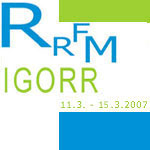

“Still a bad idea”
by Andrew Teller
This is the judgment passed by Jeremy Rifkin,
an American consultant, in the 29 September 2006 edition of the
Los Angeles Times. The subject of his
judgment was, of course, nuclear energy and the subtitle of his
article ran “Solar power is a better investment than a dated
technology that’s too expensive and dangerous”. Cost
and danger are well-known objections of the anti-nuclear crowd.
But the reader’s attention should not be monopolised by
the last part of the sentence, lest a third criticism go unnoticed.
Is nuclear energy really a dated technology? The indictment sounds
a bit weird. I’ve never heard anybody assert that the combustion
engine is a dated technology. This is despite the fact that the
first combustion engines were designed several decades before
the first nuclear reactor. Why would nuclear reactors be the embodiment
of a dated technology? To use his own words, the above-mentioned
columnist concludes that “nuclear power represents the kind
of centralized, clunky technology of a bygone era. In an age when
distributed technologies are undermining hierarchies, decentralizing
power and giving rise to open-source economic models, nuclear
power seems strangely old-fashioned and obsolete.” So there
we are: nuclear power would be obsolete because it is centralized.
If the argument is worth anything, it should also apply to other
energy sources, but this does not seem to be the case in practice.
Wind machines have a well established tendency to grow bigger
and bigger and wind farms also gain from being composed of as
many machines as possible. At the turn of this century, 1 MW wind
machines were at the forefront of wind technology. Today, the
industry’s objective is to build 5 MW units. The trend is
so well accepted that, in a Belgian newspaper, a local green politician
was looking forward a couple of years ago to seeing wind machines
delivering half the power of a nuclear power plant! To those who
know that wind machines need twice as much concrete and three
times as much steel per kW installed as a nuclear power plant,
such statement can only appear ludicrous. The misconception would
be funny if it did not betray a total lack of understanding of
very serious matters. At any rate, this gentleman’s statement
made it clear that centralisation was considered to be neither
avoidable nor evil. We have here yet another example of double
standards: centralised power generation is not worth mentioning
if it comes with renewables and bad due to the use of nuclear
power plants.
What is it then that makes a given technology obsolete? We just
have to take a few examples from other industries to answer this
question:
-
At the beginning of the twentieth century,
the British army set out to design the ultimate cavalry sword.
The undertaking quickly fell into oblivion because it became
apparent that horses were just about to be superseded by armoured
vehicles, which represented more than a quantum leap in (military)
technology; it was an actual paradigm shift. Not adopting
it was a recipe for defeat in the short run and ultimately
disappearance or domination in the long run.
-
At about the same time, steam engines were
gradually replaced by steam turbines for the generation of
electricity. This was because the latter provided direct rotational
force and, therefore, did not require a linkage mechanism
to convert reciprocating to rotary motion. Furthermore, they
produced smoother rotational forces on the output shaft. As
a result they required less maintenance and generated less
wear on the alternator than a comparable reciprocating engine.
In the present case, a similar function was performed more
efficiently by a different technology at a comparable cost.
-
Today, digital photography seems to be poised
to replace film photography. It allows instant viewing and
many operations that are much more difficult or cumbersome
with film photography. The price range of digital cameras
overlaps to a large extent with the range of film cameras.
One can reasonably assume that achieving the same level of
picture quality will sound the death knell of the film camera.
The above examples indicate that the relevance
of a given technology depends on factors such as fitness for purpose,
relative cost, absence of other technologies providing competitive
advantages at a similar cost and absence of paradigm shift. I
would be tempted to say that all these factors apply to nuclear
power generation. It certainly does fulfill its purpose; its cost
looks more and more attractive in view of rising fossil fuel costs;
each and every power generation technology has its own shortcomings;
the paradigm shift many expect to take place with fusion is still
some decades away.
At the end of the day, however, the relevance
of a technology does not result from any one person’s verdict.
It emerges from the combined actions of all the actors who weigh
the pros and cons of the different technologies available. So
far, nuclear power generation has resisted remarkably well if
it was as riddled with defects as its opponents claim. Self-appointed
pundits whose judgments reflect more their personal wishes than
a dispassionate analysis of facts won’t change anything.
(The author wishes to acknowledge Wikipedia
- en.wikipedia.org - as a source of information for the preparation
of this article, in particular as regards steam engines and digital
photography.)
|






